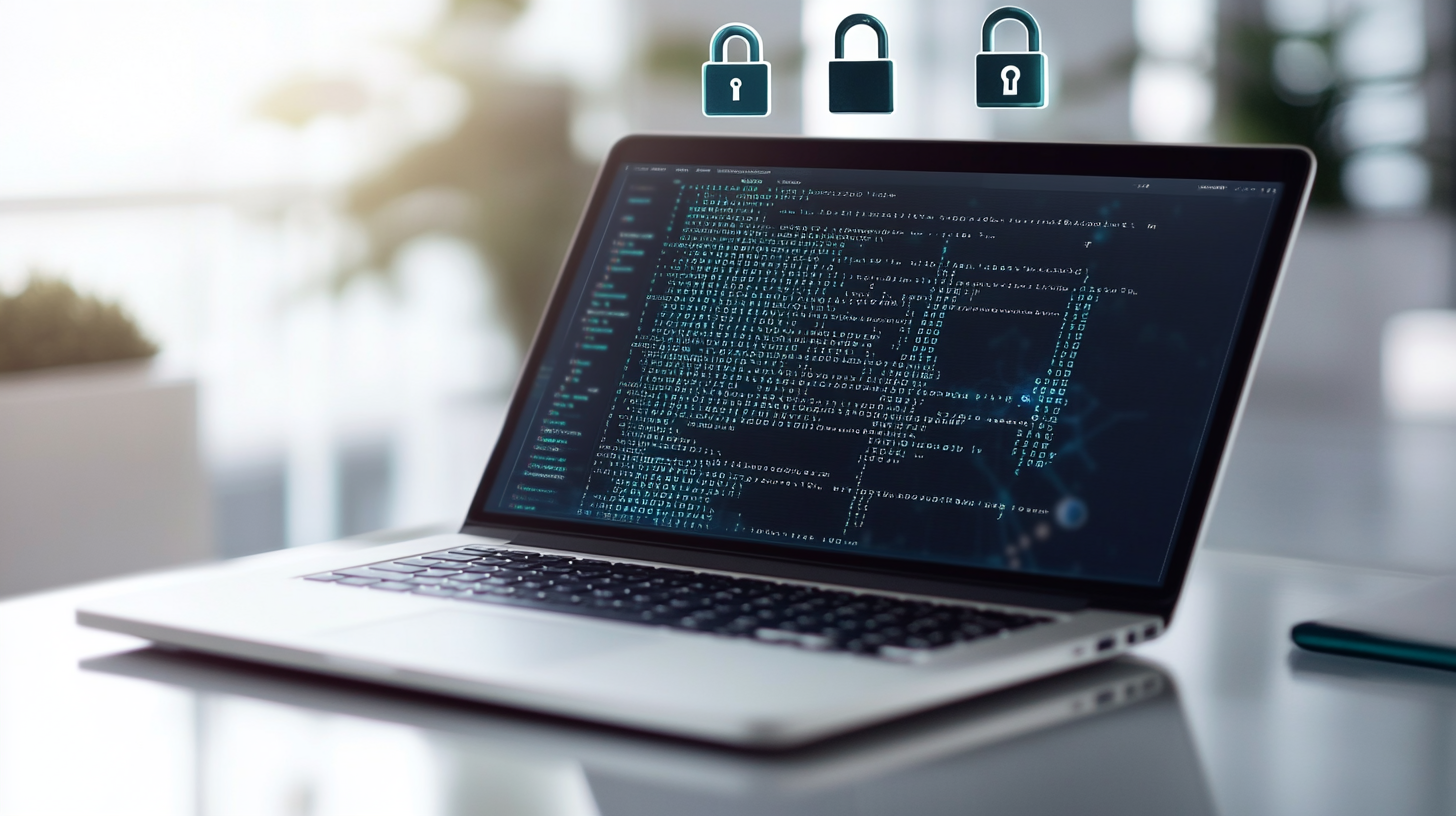Quantum computing is on the horizon, promising revolutionary advances but also posing unprecedented risks to digital security. As quantum machines gain the power to crack traditional encryption methods, the security of WordPress websites and their data hangs in the balance. Embracing quantum-resistant encryption is becoming essential for safeguarding WordPress environments against these emerging post-quantum threats.

Understanding Quantum-Resistant Encryption and Its Importance for WordPress Security
Quantum-resistant encryption, also known as post-quantum cryptography (PQC), refers to cryptographic algorithms designed to withstand attacks from powerful quantum computers. Unlike classical encryption methods such as RSA and ECC (Elliptic Curve Cryptography), which rely on mathematical problems that quantum algorithms can solve efficiently, PQC algorithms are constructed to be secure against both classical and quantum computational attacks.
The looming threat of quantum computers breaking traditional encryption methods is no longer theoretical. Quantum algorithms like Shor's algorithm can factor large integers and compute discrete logarithms exponentially faster than classical algorithms, effectively undermining the security foundations of widely used encryption schemes. This capability puts the confidentiality and integrity of data transmitted over the internet, including sensitive WordPress information, at significant risk.
WordPress, powering over 40% of websites globally, handles vast amounts of sensitive data—from user credentials and payment information to private communications and proprietary content. The widespread use of RSA and ECC-based TLS certificates to secure WordPress sites means that once quantum computers reach sufficient maturity, attackers could decrypt intercepted data or impersonate websites, leading to data breaches, identity theft, and loss of user trust.
Future-proofing WordPress data with quantum-safe encryption is crucial to maintaining robust security in the quantum era. Quantum-resistant encryption ensures that even with the advent of quantum computing, encrypted data remains secure and inaccessible to unauthorized parties. This forward-looking approach is not only about protecting current WordPress sites but also about safeguarding historical data that might be vulnerable to retrospective decryption attacks.
Integrating quantum-safe encryption into WordPress security strategies involves adopting cryptographic algorithms capable of resisting quantum attacks and updating the TLS infrastructure that underpins secure communications. This paradigm shift will enable WordPress sites to maintain confidentiality, authenticate users reliably, and ensure data integrity despite evolving computational threats.
By proactively embracing quantum-resistant encryption, WordPress site owners can mitigate the risks posed by future quantum adversaries, preserve the trust of their users, and uphold the platform’s reputation for security. The journey toward quantum-safe WordPress security starts with understanding the nature of post-quantum cryptography and its critical role in the digital landscape of tomorrow.
Overview of NIST-Approved Post-Quantum Cryptography Algorithms for WordPress TLS
The National Institute of Standards and Technology (NIST) plays a pivotal role in guiding the cybersecurity community through the complex transition to post-quantum cryptography. After a rigorous multi-year evaluation process, NIST has approved a selection of PQC algorithms that are poised to become industry standards. These algorithms are designed to resist quantum attacks while maintaining compatibility with existing internet protocols, making them ideal candidates for securing WordPress TLS connections.
Two standout NIST-approved PQC algorithms relevant for WordPress security are CRYSTALS-Kyber and Falcon. Both have emerged as front-runners for quantum-safe TLS certificates due to their strong security guarantees and practical performance characteristics.

CRYSTALS-Kyber: A Quantum-Resistant Key Encapsulation Mechanism
CRYSTALS-Kyber is a key encapsulation mechanism (KEM) that enables secure key exchange over insecure channels, a foundational operation in TLS handshakes. Its design leverages lattice-based cryptography, which is currently considered one of the most promising approaches for quantum resistance. Kyber’s security is based on the hardness of the Learning With Errors (LWE) problem, which remains difficult for quantum computers to solve efficiently.
For WordPress TLS certificates, CRYSTALS-Kyber offers several benefits:
- Quantum-Safe Key Exchange: It replaces RSA/ECC key exchange mechanisms with a post-quantum alternative that resists quantum-enabled cryptanalysis.
- Compact Keys and Ciphertexts: Kyber’s relatively small key sizes reduce overhead, which is crucial for web servers managing multiple simultaneous connections.
- Performance Efficiency: Despite its quantum resistance, Kyber maintains competitive speeds for key generation, encapsulation, and decapsulation, preserving a smooth user experience on WordPress sites.
Falcon: A Digital Signature Scheme for Quantum-Safe Authentication
Complementing Kyber’s key exchange capabilities, Falcon is a lattice-based digital signature algorithm recommended by NIST for post-quantum TLS certificates. It specializes in providing strong authentication guarantees, ensuring that WordPress servers can sign certificates and verify signatures even in the presence of quantum adversaries.
Falcon’s strengths include:
- Compact Signatures: Smaller signature sizes mean faster verification and reduced bandwidth consumption during TLS handshakes.
- Strong Security Foundations: Falcon relies on the hardness of the NTRU lattice problem, a well-studied challenge believed to be resilient against quantum attacks.
- Compatibility: Falcon signatures can be integrated into existing TLS workflows with minimal disruption, enabling a smoother transition for WordPress administrators.
Comparing PQC Algorithms to Legacy Cryptographic Methods
Legacy cryptographic methods such as RSA and ECC have long been the backbone of TLS security but are vulnerable to quantum computing breakthroughs. In contrast, CRYSTALS-Kyber and Falcon provide quantum-safe alternatives that do not sacrifice fundamental security properties.
- Security: Both Kyber and Falcon are designed to withstand attacks from both classical and quantum adversaries, unlike RSA/ECC, which will be vulnerable once large-scale quantum computers become available.
- Compatibility: These PQC algorithms integrate with current TLS protocols, meaning WordPress site owners can adopt quantum-safe TLS certificates without a complete overhaul of their infrastructure.
- Performance: While PQC algorithms typically require more computational resources than traditional ones, Kyber and Falcon strike a balance between security and efficiency, minimizing impact on server responsiveness.
The adoption of NIST-approved PQC algorithms marks a crucial step toward quantum-safe TLS for WordPress websites. By implementing CRYSTALS-Kyber for secure key exchange and Falcon for digital signatures, WordPress can maintain encrypted communications that remain reliable and trustworthy in a post-quantum world.
Incorporating these algorithms into TLS certificates is a foundational component of future-proofing WordPress security, ensuring that sensitive data remains protected against the emerging quantum threat landscape. This strategic integration paves the way for WordPress sites to continue offering secure user experiences well into the quantum computing era.
Implementing Quantum-Safe TLS Certificates on WordPress Using OpenSSL 3.2+
Transitioning to quantum-resistant encryption on WordPress demands practical steps to integrate post-quantum cryptography into the hosting environment. One of the key enablers for this quantum leap is OpenSSL 3.2+, which introduces support for NIST-approved PQC algorithms such as CRYSTALS-Kyber and Falcon. Leveraging OpenSSL’s latest capabilities allows WordPress administrators to deploy quantum-safe TLS certificates that fortify site communications against future quantum threats.
Preparing Your Hosting Environment for PQC Integration
Before implementing quantum-safe TLS certificates, ensure your WordPress hosting stack supports the necessary cryptographic libraries and configurations. The recommended environment for optimal performance and compatibility is the LEMP stack—comprising Linux, Nginx, MySQL, and PHP—combined with OpenSSL 3.2 or higher.
Key preparation steps include:
- Upgrade OpenSSL: Verify and upgrade to OpenSSL 3.2+ on your server. This version incorporates support for post-quantum algorithms, enabling the use of CRYSTALS-Kyber and Falcon in TLS operations.
- Update Nginx: Confirm that your Nginx version can interface with the upgraded OpenSSL libraries and handle PQC cipher suites. Patching or recompiling Nginx with OpenSSL 3.2+ may be required.
- Ensure PHP Compatibility: PHP modules managing HTTPS requests should be compatible with the new TLS configurations to avoid disruptions in WordPress functionality.
- Backup Existing Configurations: Prior to changes, back up current TLS and server configurations to facilitate rollback if unexpected issues arise.
Step-by-Step Guide to Deploying Quantum-Safe TLS Certificates
Obtain PQC-Enabled Certificates: Acquire TLS certificates from certificate authorities (CAs) that support NIST-approved PQC algorithms. While still emerging, some CAs now offer certificates embedding CRYSTALS-Kyber and Falcon keys and signatures.
Configure OpenSSL for PQC: Modify OpenSSL configuration files to enable the desired quantum-resistant cipher suites. This includes specifying Kyber for key encapsulation and Falcon for digital signatures in the TLS handshake.
Update Nginx TLS Settings: In the Nginx server block, define the SSL protocols and cipher suites to prioritize quantum-safe algorithms. For example:
ssl_protocols TLSv1.3; ssl_ciphers TLS_AES_256_GCM_SHA384:TLS_CHACHA20_POLY1305_SHA256:TLS_AES_128_GCM_SHA256:<u>pq-kyber</u>:<u>pq-falcon</u>; ssl_certificate /path/to/pqc_certificate.pem; ssl_certificate_key /path/to/pqc_private_key.pem;Test TLS Handshake: Use tools like
openssl s_clientto validate the TLS handshake and confirm the use of PQC algorithms.Restart Services: Reload or restart Nginx and any relevant services to apply the new TLS configuration.
Monitor Logs and Performance: After deployment, monitor server logs for errors related to TLS and watch for any impacts on site responsiveness.
Practical Tips for Smooth PQC Deployment on WordPress
- Start in Staging: Implement quantum-safe TLS certificates on a staging or development environment before production rollout. This helps identify compatibility issues without affecting live users.
- Use Hybrid Certificates: Initially, consider hybrid certificates combining classical and PQC algorithms. This approach maintains backwards compatibility while introducing quantum resistance.
- Coordinate with Hosting Providers: If using managed WordPress hosting, verify whether the provider supports OpenSSL 3.2+ and PQC integration, or request assistance with upgrades.
- Update WordPress Plugins: Ensure security and SSL-related plugins are compatible with the updated TLS stack and do not interfere with PQC cipher negotiation.
- Stay Informed: Follow NIST’s ongoing PQC standardization progress and OpenSSL release notes to keep your setup current with emerging best practices.
Implementing quantum-safe TLS certificates on WordPress through OpenSSL 3.2+ and a properly configured LEMP stack establishes a resilient security foundation. This proactive approach enables WordPress site owners to embrace the next generation of encryption standards, ensuring sustained confidentiality and integrity of user data in the face of advancing quantum computing capabilities.

By adopting these technologies early, WordPress environments not only protect themselves against future quantum attacks but also demonstrate a commitment to cutting-edge security—a critical factor in maintaining user trust and regulatory compliance in an increasingly complex digital landscape.
Performance Benchmarks: Impact of Quantum-Resistant Encryption on WordPress Server Load
Integrating quantum-resistant encryption into WordPress hosting environments inevitably raises concerns about its impact on server performance. Understanding how post-quantum cryptography (PQC) algorithms like CRYSTALS-Kyber and Falcon affect server load, latency, and resource consumption is critical for optimizing WordPress sites while maintaining robust quantum-safe TLS security.
Benchmark Data Comparing Traditional vs. PQC-Enabled TLS on LEMP Stacks
Recent performance benchmarks conducted on LEMP stacks with OpenSSL 3.2+ provide valuable insights into the operational costs of deploying quantum-safe TLS certificates. The tests measured CPU usage, memory consumption, and response times during TLS handshakes and typical HTTP/S requests on WordPress instances secured with either legacy cryptographic methods or PQC-enabled TLS.
Key findings include:
- CPU Usage: PQC algorithms, especially CRYSTALS-Kyber’s key encapsulation and Falcon’s signature verification, exhibit higher computational complexity than traditional RSA or ECC operations. On average, CPU utilization during TLS handshakes increases by approximately 15-25% when using PQC-enabled certificates.
- Memory Consumption: The memory overhead for PQC operations remains moderate. Benchmarks showed a 10-15% increase in RAM usage during peak TLS handshake activity, primarily due to larger key sizes and additional cryptographic computations.
- Latency and Response Times: TLS handshake latency rises slightly, with an added delay of 20-30 milliseconds on average. This increase is generally imperceptible to end users but can affect high-traffic WordPress sites with intensive secure connections.
Despite these increases, the overall impact on WordPress server responsiveness during content delivery is minimal, as TLS handshakes constitute only a fraction of total request processing time.
Analyzing the Trade-Offs Between Enhanced Security and Server Performance
The performance trade-offs when adopting quantum-resistant encryption are clear but manageable. While server resources are taxed more heavily during TLS setup, the security benefits of quantum-safe cryptography far outweigh the costs, especially considering the long-term risk mitigation against post-quantum threats.
- Security Gains: By using CRYSTALS-Kyber and Falcon, WordPress TLS certificates become resilient to future quantum decryption attempts, protecting sensitive data and user sessions.
- Performance Costs: Increased CPU and memory usage can lead to slightly higher server loads, but modern hardware and optimized software stacks can absorb this overhead with proper configuration.
- User Experience: The minor latency added by PQC-enabled TLS handshakes typically does not degrade user experience, especially when combined with HTTP/2 or HTTP/3 protocols that reduce handshake frequency.
Recommendations for Optimizing WordPress Performance with Quantum-Resistant Encryption
To balance quantum-resistant encryption performance with efficient WordPress delivery, consider the following optimization strategies:
- Leverage Hardware Acceleration: Utilize CPUs with cryptographic instruction sets and dedicated hardware accelerators to speed up PQC computations.
- Enable TLS Session Resumption: Configure TLS session tickets or session IDs to minimize full handshakes, thereby reducing the frequency of expensive PQC operations.
- Use Content Delivery Networks (CDNs): Offload TLS termination to CDNs that support PQC algorithms, reducing the burden on origin WordPress servers.
- Optimize Nginx and PHP-FPM Settings: Tune worker processes, connection limits, and buffer sizes to handle increased TLS handshake loads efficiently.
- Monitor and Scale Resources: Implement monitoring tools to track server load and scale resources dynamically or through load balancing during peak traffic.
By carefully applying these recommendations, WordPress site owners can maintain strong quantum-safe TLS security without sacrificing performance or user satisfaction. The modest server overhead introduced by PQC algorithms is a reasonable investment to future-proof WordPress environments against the quantum computing revolution.

Ultimately, embracing post-quantum cryptography through NIST-approved algorithms like CRYSTALS-Kyber and Falcon positions WordPress to remain secure and performant in the face of emerging cyber threats. This proactive approach not only protects data but also demonstrates a commitment to cutting-edge security standards, reinforcing trust and resilience in the WordPress ecosystem.


